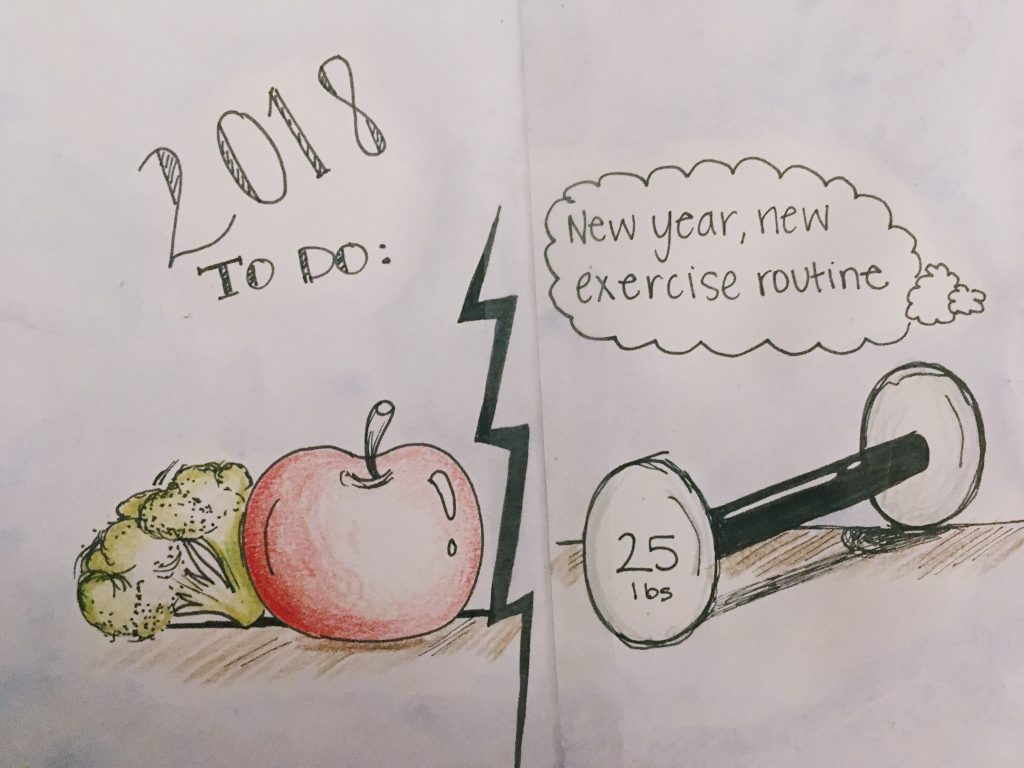As 2017 comes to a close, many inspired individuals begin the new year feeling rejuvenated and capable of reaching lofty goals. They are able to relate to one of the most common resolutions formed: increasing personal fitness. One fourth of the resolutions Americans make are to reach a higher activity level, but statistics have shown just fewer than half of these people achieved this goal. With a lack of motivation and the difficulty associated with keeping up, many struggle to stick to their original plan. By making resolutions manageable and monitoring your progress, these goals can be attained.
Before setting a goal, it is important to ensure that you are mentally and physically prepared to commit to it. Determining your readiness can help create a realistic resolution that you will be able to follow through on. By holding yourself responsible initially, it will make it easier to prioritize your fitness later on. Persistence and resilience is what will allow one to effectively execute a goal that is measurable, achievable, relevant and timebound.
Some may consider their resolution to be manageable and attainable, but when things get hard, individuals often lose motivation and begin to develop negative habits. This is why it is even more essential to create a realistic goal that consists of focusing on the small point needed to reach the overall picture before beginning. By taking steady steps, it is much easier to reach the end goal, as meeting specific points will feel more rewarding than endless exercise without an immediate benefit.
The easiest way to do this is to create a plan. Creating an outline by breaking down the resolution gives the individual knowledge of exactly what they are focusing on. General goals include losing weight, running more, or joining a gym. By creating a specific goal such as lose ten pounds, run at least 20 minutes a day, or be able to run a mile under a certain amount of minutes, it is easier to determine and define the necessary steps required and where you are headed.
Committing to date-specific goals is another efficient way stay on task. Scheduling workouts out can help you find, allot, and decide how much time will be spent exercising. This can be done by generating monthly goals where each month starts fresh rather than creating all or nothing year long goals. Giving yourself a shorter period of time to fulfill your resolution makes you much more likely to complete it. A good first step could even be paying in advance for a group class or even a personal trainer. The feeling of obligation to attend something that you paid for serves as a great motivation on days where you don’t feel as committed.
Measuring your progress where you receive feedback and reflect on where you started or where you stand makes it much easier to adjust your efforts, especially when they are written down to serve as a reminder. More specifically, tracking platforms that have social communities you can join, such such as fitbit, often inspire individuals to work out more. The support provided by friends and family from their awareness of your goal increases the likeliness you feel comfortable asking for help and make you feel more capable.
Overall, individuals should try to enjoy the process and look forward to success. By mixing things up and trying different approaches, finding your willpower should come naturally. Clearly, it is important to keep moving and manage time, but with confidence and encouragement, acknowledging mistakes and progress can act as a catalyst rather than an obstacle. Avoiding excuses allows people to develop a sense of resilience, and simply putting in effort outweighs any temporary failure. Patience is critical under all circumstances; you may not see an immediate breakthrough, but gains will be rapidly visible with determination and motivation.
Lexi Liu
staff writer
Graphic: Maraea Garcia

